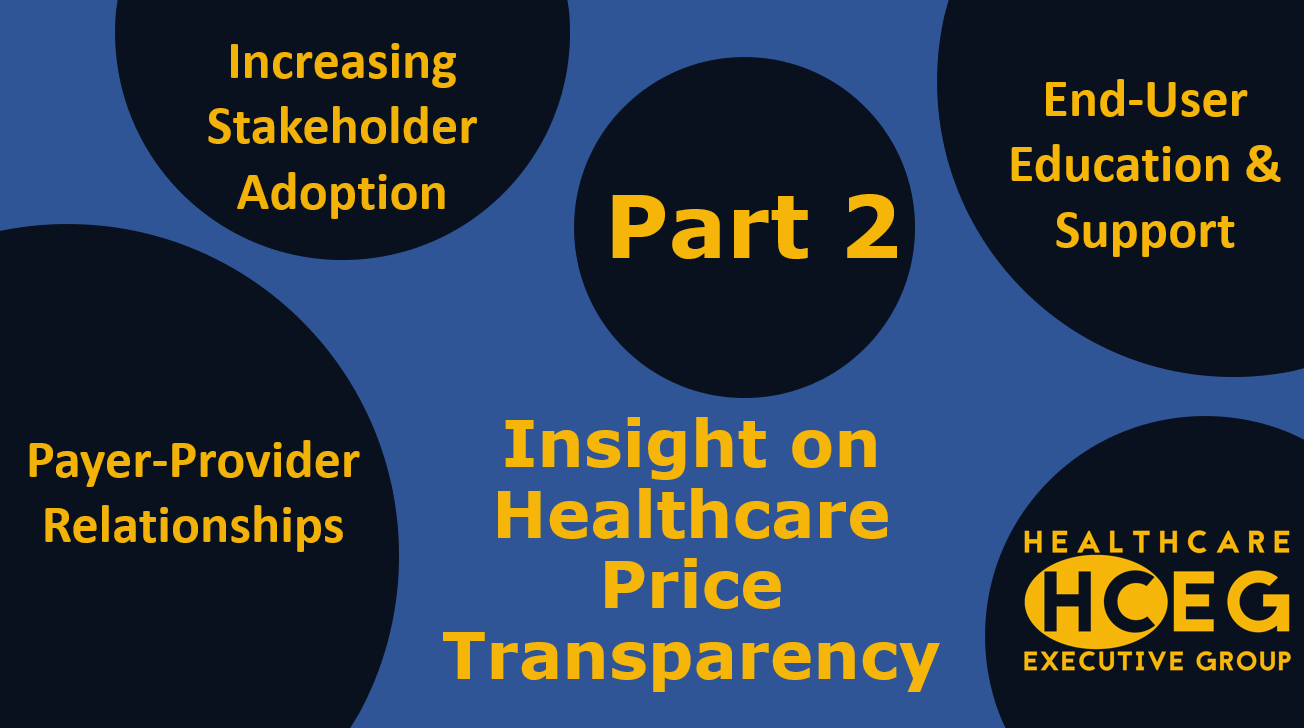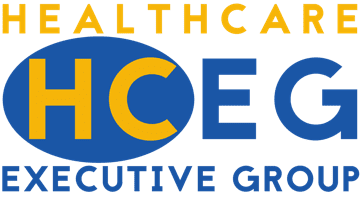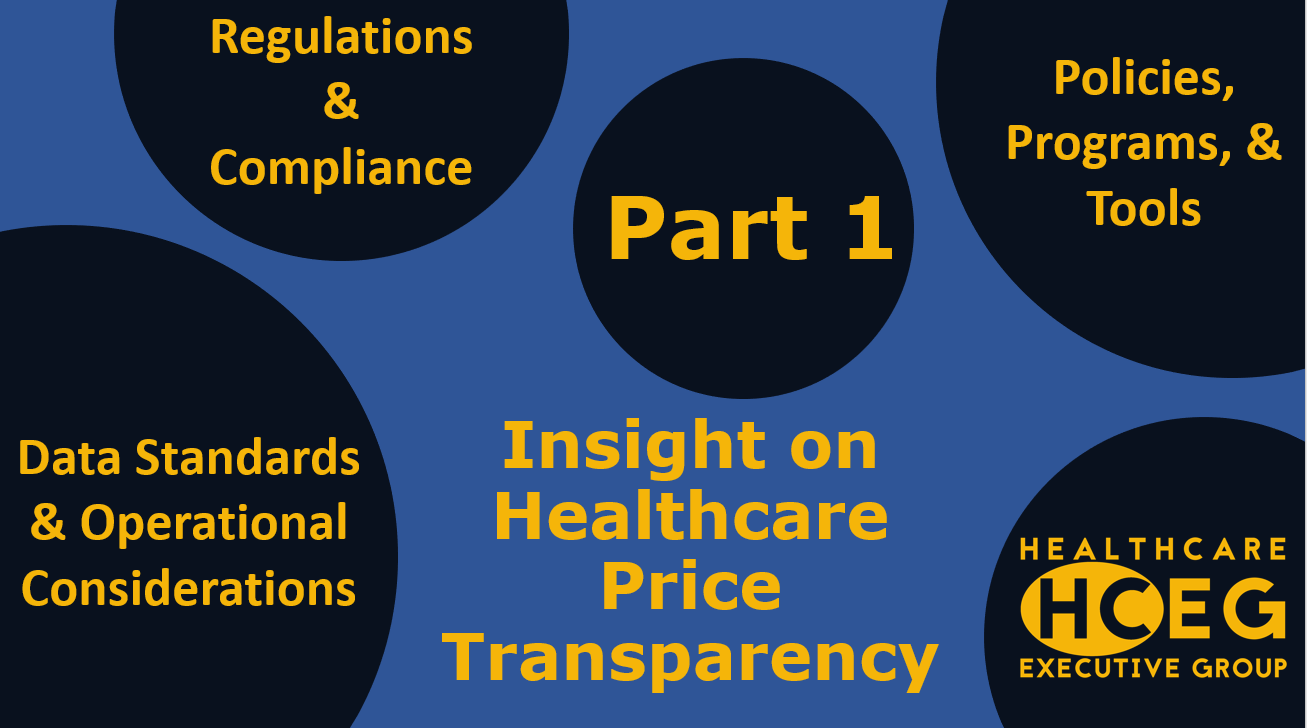
The Transparency in Coverage Mandate and the No Surprises Act are forcing health plans, health systems, healthcare providers to focus their attention and already overburdened resources on price transparency compliance-related activities. While price transparency mandates and regulations are intended to help make healthcare better and more cost-effective for health plan members and healthcare provider’s patients, there are strategic and tactical reasons to holistically address the following aspects of price transparency:
- Policies, Programs, & Tools
- Data Standards, Data Collection & Operational Considerations
- Increasing End-User Adoption
- End-user Education & Support
- Payer-Provider Relationships
In the first post of a two-part series, Healthcare Price Transparency – Leaders Share Insight – Part 1, highlights from our first Focus Area Roundtable on Costs & Transparency held on April 5, 2021 were shared. HCEG members working for health plans, healthcare providers, and healthcare-related technology/service organizations shared their responses to some questions presented by Andy Hoffman and Matt Parker, two thought leaders with our 2021 Focus Area Partner for Costs & Transparency: HealthSparq.
Stakeholder Adoption, End-User Support, & Payer-Provider Relationships
In this second post, comments and insights from Focus Area Roundtable participants on the following aspects of price transparency are presented:
- Increasing stakeholder adoption of price transparency tools and services
- The importance of end-user education and support
- Payer-provider relationships to support access to price transparency information
RELATED: Understanding the Transparency in Coverage Mandate
Increasing Stakeholder Adoption of Price Transparency Tools
I think the concept of just being a liaison will go a long way on either side through this process. (Health Plan)
Go into the prescriber’s workflow with price transparency, going to the physician’s workflow with pricing information that not only saves the system money but that directly affects the consumer in a way that is frictionless. (Industry Analyst)
Whenever these conversations come up, taking a step back and saying [asking] Who’s going to benefit the most? And by that, I mean not just like the individual or the entity but the health system at large. If it doesn’t really waterfall to the whole cost of care and care opportunities, then we’re probably just clogging up the system. Who’s this going to piss off? Who’s going to lose from that deal? Companies taking rebates are going to lose. Companies overcharging and hiding pricing are going to lose. Intermediaries who aren’t necessary may lose. (Industry Analyst)
We’ve kind of assumed that we have to have all of these systems connected and all this interoperability wired in order to do that. But I’ve seen some really successful approaches and getting information into the decision maker’s hands that benefits the end consumer of health. (Industry Analyst)
Take something like hip and knee replacements. There’s an awareness of ambulatory participation, acute participation, post-acute participation on a couple of levels whether that’s brick and mortar and or home on the post-acute side. (Technology Provider)
Health Plan, Health System, & Healthcare Provider Leaders – Click on the Above to Join a Focus Area Roundtable
Importance of End-User Education and Support for Price Transparency
Price transparency has different meanings to different people depending on their roles and expectations. (Provider)
I think hospitals will have to somehow educate patients and that can come in different forms. And whether it’s on a one-on-one setting or more about broader communication, there is an element of patient education that will need to happen. It’s going to be a lot more complex because it’s going to also have to account for the impact of the health plan. So, the education component is going to be large. (Industry Analyst)
I think the reality is most of us don’t really want to solve the problem in terms of us being the recipient of care. So, if I’m a patient, member, consumer, employee, I want the system to fix these things. I want my health plan that I signed up for to be smart. I want my doctor to have information and just do stuff that doesn’t cost me excess money. I want my pharmacist. (Industry Analyst)
We’re in rural areas so that’s a big, big challenge for us. But what does it mean to the consumer? Do they think that when they go in and try this tool that they’re going to understand precisely what the cost of their knee surgery is? And then is it going to be a big dissatisfier when they learned that surgeon had to do something more, or it was more complex than they originally thought? And as a result of that, they disengage. So, will this help or harm them? (Health Plan)
And then there’s the component of things that even an educated consumer might not know about like the anesthesiologist in the acute setting which rarely gets talked about. And then a bill shows up, let alone the medications that are incurred post-acute. (Technology Provider)
We also have a couple, sort of, denominators there. Am I able to figure this out on my own? Do I have search skills? And EOB skills? And ICD-10 code skills? And then the other is: Am I on Medicaid or sort of a capped model where what do I care about the price? (Industry Analyst)
Patient-Physician Relationships May Offset Price Transparency Benefits
I think it’s a personal thing. For surgeries you develop a relationship with your physicians so even if you see a great price somewhere else, I don’t think that people would jump out to go have say like a knee replacement or shoulder replacement or something even more critical with another physician somewhere else. (Provider)
If they have a relation, they tend to sort of stick with what they know. The people that would make the change are not the people that we would see price making the decision from a true consumer choice perspective but those that are just utterly desperate and have, maybe require something that they can’t otherwise get at which is, again, not part of, not really the spirit of the law, per se. (Health Plan/Provider)
RELATED: Healthcare Leaders Focus on Healthcare Policy & ACA
Payer-Provider Relationships Impacts from Price Transparency Compliance
How do you see the relationship between payers and providers in the space of both informing about price transparency but also making sure that the messaging is consistent? Because again, your got contract disputes and a lot of the No Surprise Act is going to come around contract disputes. (Technology Provider)
This [price transparency] could change the relationship between the provider and the payer. And we’re already seeing a lot of movement around mergers and acquisitions and perhaps this would incent that kind of behaviors further – or maybe not. But I think there will be some sort of macro-level impact as this becomes more widespread. (Health Plan)
Well, I think when it comes to that relationship of payer and provider, one key element that’s going to go a long way actually is support. And support probably more for the hospital side because there’s an element of an IT integration of the back end that you have to think about. And how does it all fit together? And what codes they have to integrate through? (Thought Leader)
Join a Focus Area Roundtable – Connect with Healthcare Peers
Additional Focus Area Roundtables on Costs & Transparency – and other 2021 HCEG Top 10+ focus areas such as Healthcare Policy & ACA, Interoperability, and M & A /Joint Ventures, among others – will take place throughout 2021. If you are interested in participating, reach out to us via email or complete this short form to indicate your interests.
To receive recaps of our Focus Area Roundtables and other information of potential use for leaders of health plans, health systems, and healthcare provider organizations, join our newsletter.





